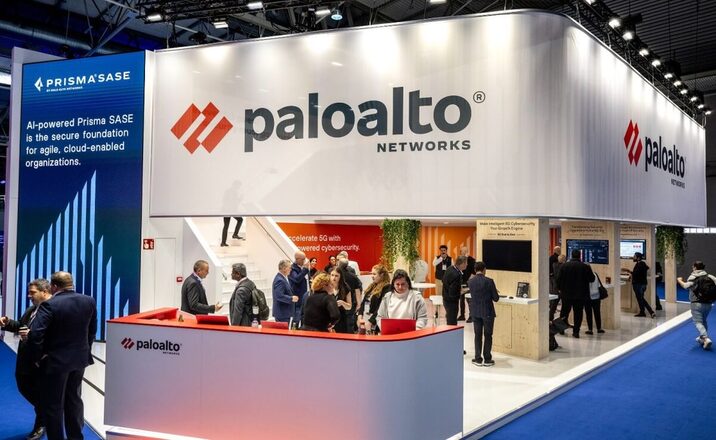
Palo Alto Networks is making one of its most aggressive moves yet in the race to build infrastructure for AI-driven enterprises. The cybersecurity giant announced a definitive agreement to acquire Chronosphere, a fast-growing observability platform engineered to handle the scale, latency, and resilience requirements of modern cloud and AI workloads.
The $3.35 billion acquisition signals Palo Alto Networks’ intention to unify telemetry, AI automation, and security into a single data platform capable of supporting the next wave of hyperscale applications.
At the center of this deal is an industrywide shift: AI data centers and cloud-native environments now depend on uninterrupted uptime, deterministic performance, and the ability to detect and remediate failures instantly. Observability – once a domain of dashboards and log aggregation – has become mission-critical infrastructure. For Palo Alto Networks, Chronosphere represents the architectural foundation for this new reality.
Chronosphere’s platform was built for organizations operating at extreme scale, including two leading large language model providers. Its architecture emphasizes cost-optimized data ingestion, real-time visibility across massive cloud environments, and resilience under unpredictable workloads. Chronosphere has also gained industry validation, recently recognized as a Leader in the 2025 Gartner Magic Quadrant for Observability Platforms.
Palo Alto Networks Chairman and CEO Nikesh Arora said Chronosphere’s design aligns with the operational demands of AI-native companies. He emphasized that the acquisition will extend the reach of Palo Alto Networks’ AgentiX, its autonomous security and remediation framework. The combined offering is intended to rethink observability from passive alerting to active, AI-driven remediation. According to Arora, AI agents will be deployed across Chronosphere’s telemetry streams to detect anomalies, investigate root causes, and autonomously implement fixes – turning observability into a real-time automated control plane.
Chronosphere co-founder and CEO Martin Mao described the acquisition as the natural next chapter for the company’s mission to “provide scalable resiliency for the world’s largest digital organizations.” He framed Palo Alto Networks as the right strategic match to expand Chronosphere’s capabilities globally, while deepening integration between security data and operational telemetry. Both companies aim to build a consolidated data layer that can keep pace with the explosion of metrics, traces, logs, and events produced by AI-powered infrastructure.
Managing Observability Costs
Beyond automation, the acquisition reflects rising pressure on enterprises to manage observability costs. Cloud-native architectures generate telemetry at petabyte scale, creating unsustainable ingestion and retention expenses for many organizations. Chronosphere’s optimized pipeline and data transformation technology promise to reduce operational costs by routing, deduplicating, and prioritizing telemetry in ways traditional observability stacks cannot.
Chronosphere would bring more than technology. The company reports annual recurring revenue above $160 million as of September 2025, with triple-digit year-over-year growth – an uncommon trajectory in the observability market, which has grown crowded and competitive. Palo Alto Networks expects the acquisition to close in the second half of its fiscal 2026, subject to regulatory approval.
The move positions Palo Alto Networks as an emerging heavyweight in observability, setting it up to compete more directly with Datadog, Dynatrace, and New Relic. But unlike its rivals, Palo Alto Networks aims to merge observability with active AI agents and security telemetry, betting that customers will increasingly prioritize unified control across performance, cost, and cyber risk.
For enterprises navigating the uncertainty of AI-era operations, the promise of a consolidated observability and remediation engine may prove compelling. As workloads become distributed across clouds, GPUs, edge devices, and emerging AI fabrics, the companies argue that the old model of isolated dashboards can no longer keep up with the volume or velocity of operational data. Instead, the future will require autonomous systems capable of interpreting telemetry and responding in real time – exactly the space Palo Alto Networks hopes to define through this acquisition.
Executive Insights FAQ: Palo Alto Networks + Chronosphere
What strategic gap does Chronosphere fill for Palo Alto Networks?
Chronosphere gives Palo Alto Networks a cloud-scale observability platform optimized for high-volume AI and cloud workloads, enabling unified security and performance visibility.
How will AgentiX integrate with Chronosphere’s platform?
AgentiX will use Chronosphere’s telemetry streams to deploy AI agents that detect issues, investigate root causes, and autonomously remediate failures across distributed environments.
Why is observability suddenly mission-critical for AI workloads?
AI data centers require continuous uptime and deterministic performance; observability becomes the real-time sensor layer that ensures reliability and cost-efficient scaling.
What financial impact does Chronosphere bring?
Chronosphere reports more than $160M in ARR with triple-digit annual growth, giving Palo Alto Networks a fast-expanding revenue engine in an increasingly competitive market.
How will customers benefit from the combined offering?
Enterprises would gain deeper visibility across security and observability data at petabyte scale, paired with automated remediation and significant cost reductions in telemetry ingestion.


